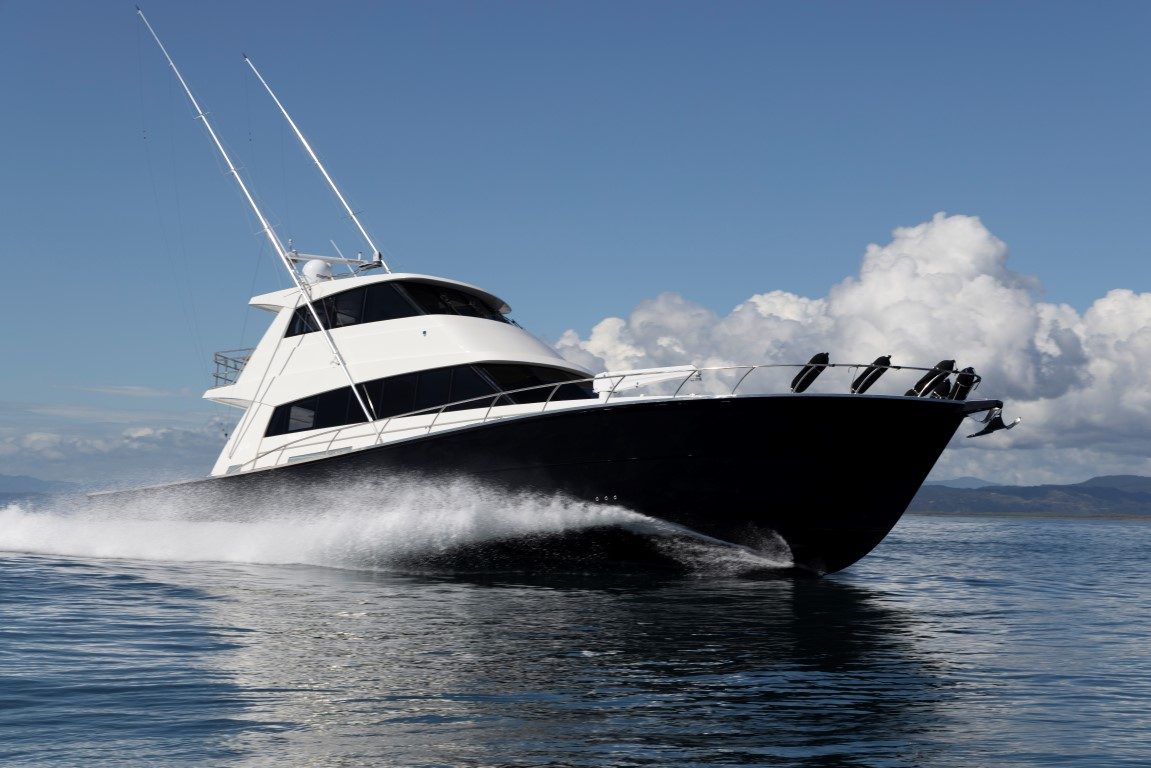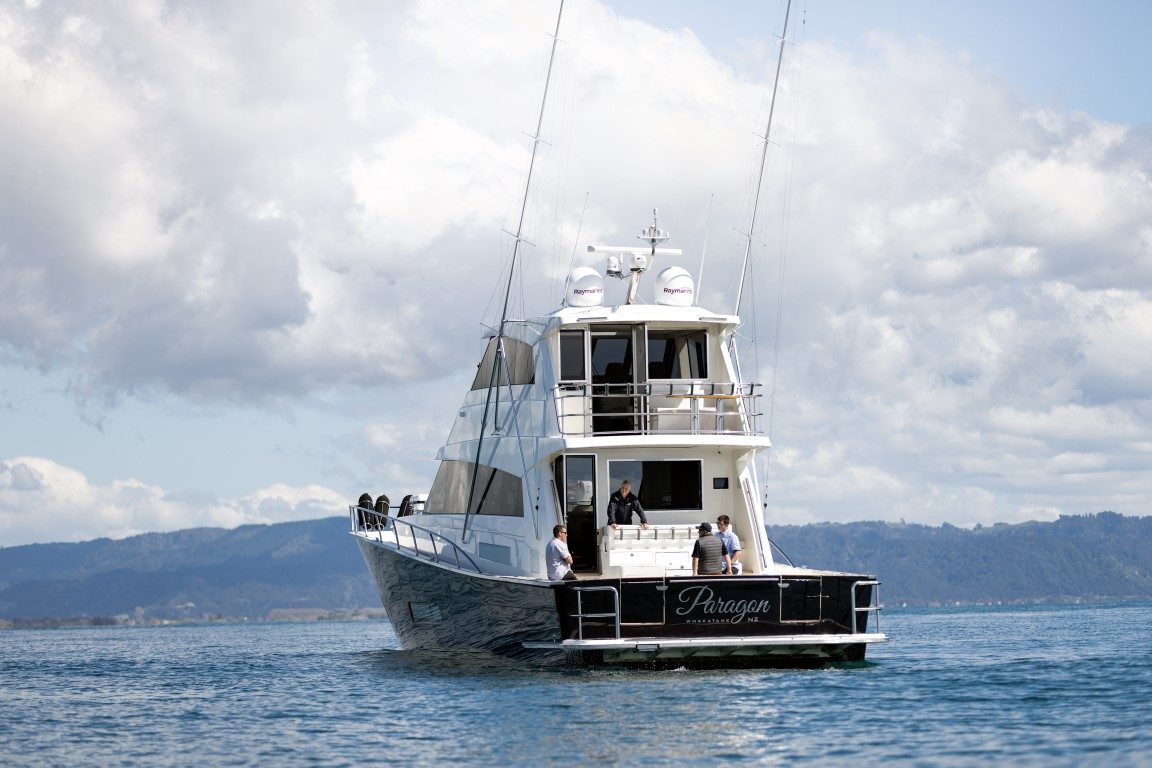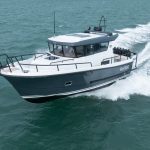‘Behemoth’ is a word which springs to mind or, perhaps more nautically, ‘leviathan’.
- Superyacht standard of finish inside and out
- Comprehensive fishfinding electronics package
- Impressive turn of speed
- Supremely practical, sportfishing-oriented layout complemented by luxury interior
- Huge range and matching offshore capability























